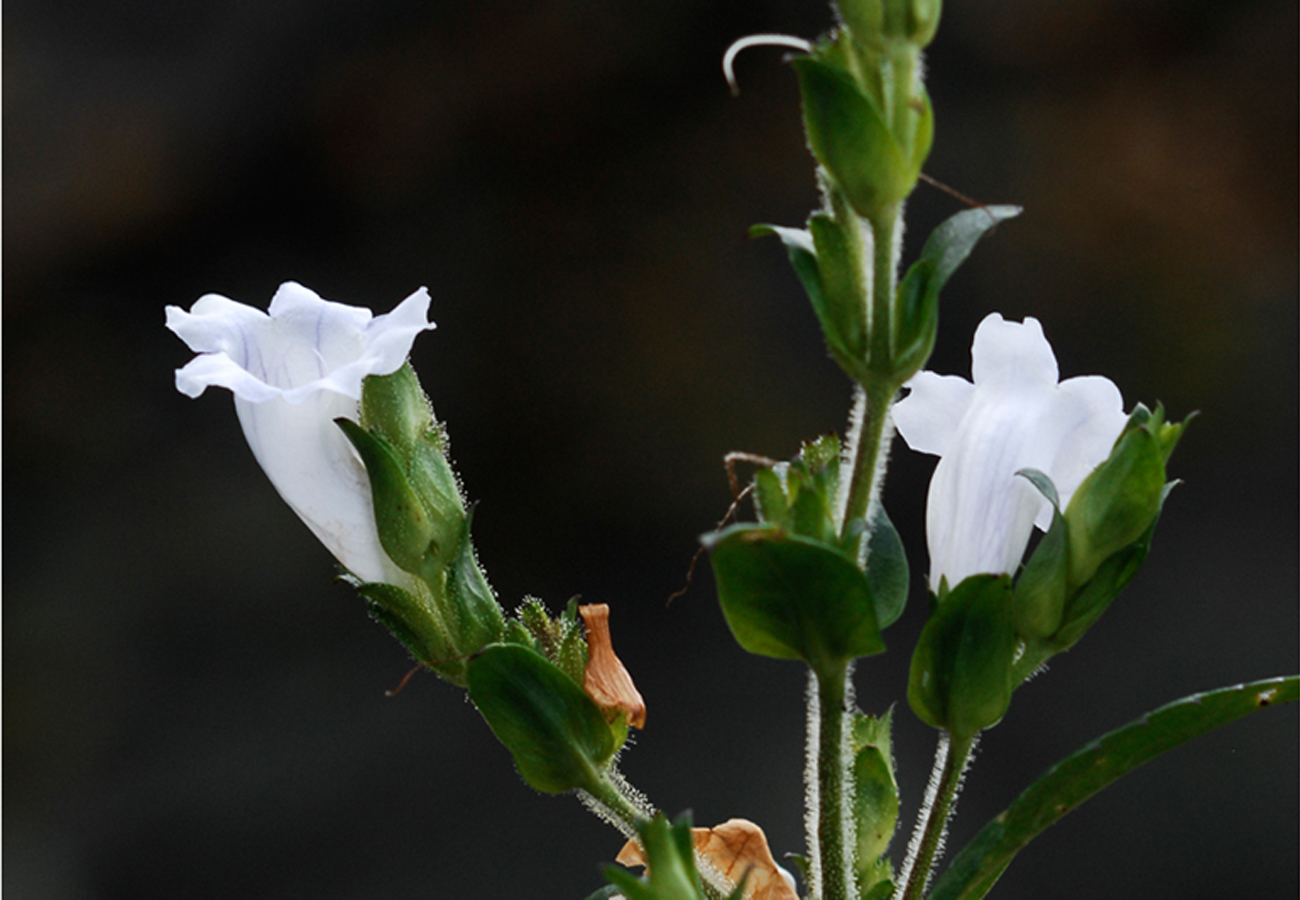Abstract
Strobilanthes homotropa is an intricate species reported from Nilgiris, India. This taxon was treated in various ways leading to ambiguity in its taxonomic recognition. The present study revisits the taxonomy of S. homotropa and provides an amended description for the species. While doing so, S. homotropa is segregated from the puzzling species S. sexennis and a new species S. pradeepiana is recognized.
References
<p>Anderson, T. (1867) An enumeration of the Indian species of Acanthaceae. The Journal of the Linnean Society, Botany 9: 425–526. https://doi.org/10.1111/j.1095-8339.1867.tb01308.x<br>Augustine, J. (2018) Strobilanthes Blume in the Western Ghats, India. Malabar Natural History Society, Kozhikode, 152 pp.<br>Beddome, R.H. (1864) Contributions to the Botany of Southern India. The Madras Journal of Literature and Science, Ser.3 1: 55. [https://www.biodiversitylibrary.org/item/164965]<br>Beddome, R.H. (1874) Icones Plantarum Indiae Orientalis, vol. 1. Gantz Brothers, Madras, 70 pp., 300 t. [https://www.biodiversitylibrary.org/item/262606]<br>Blume, C.L. (1826) Bijdragen tot de Flora van Nederlandsch Indie 14. Ter Lands Drukkerij, Batavia, pp. 780–807. https://doi.org/10.5962/bhl.title.395<br>Carine, M.A. & Scotland, R.W. (2002) Classification of Strobilanthinae (Acanthaceae): trying to classify the unclassifiable? Taxon 51: 259–279. https://doi.org/10.2307/1554897<br>Chen, J-T., Huang, X-H., Lv, Z-Y., Kuang, T.-H., Luo, J., Deng, Y.F. & Deng, T. (2020) Strobilanthes sunhangii (Acanthaceae), a new species from Tibet, China. PhytoKeys 166: 117–127. https://doi.org/10.3897/phytokeys.166.58831<br>Chen, F.L., Deng, Y.F., Xiong, Z.B. & Ran, J.C. (2019) Strobilanthes hongii, a new species of Acanthaceae from Guizhou, China. Phytotaxa 388 (1): 135–144. https://doi.org/10.11646/phytotaxa.388.1.7<br>Clarke, C.B. (1884) Acanthaceae. In: Hooker, J.D. (Ed.) Flora of British India 4. L. Reeve, London. pp. 387–558. https://www.biodiversitylibrary.org/item/13817<br>Deng, Y.F. (2019) Transfer of the Philippine species of Hemigraphis Nees to Strobilanthes Blume (Acanthaceae). Phytotaxa 404 (5): 203–208. https://doi.org/10.11646/phytotaxa.404.5.3<br>Fyson, P.F. (1915) The Flora of the Nilgiri and Pulney Hill-tops1. The Superintendent, Govt. Press, Madras, pp. 312–314. https://doi.org/10.5962/bhl.title.10798<br>Gamble, J.S. (1924) Flora of the Presidency of Madras 2. West, Newman & Adlard, London, pp. 1025–1044. https://www.biodiversitylibrary.org/item/10372<br>Karthikeyan, S., Sanjappa, M. & Moorthy, S. (2009) Flowering Plants of India, a check-list of Dicotyledones, vol. 1. Botanical Survey of India, Kolkata, India, pp. 41–60.<br>Krishnapillai, P.A., Thomas, S., Britto, S.J. & Mani, B. (2020) Amending Strobilanthes gamblei (Acanthaceae) and an overlooked new species Strobilanthes bourdillonii from the Western Ghats, India. Phytotaxa 472 (1): 49–55. https://doi.org/10.11646/phytotaxa.472.1.6<br>Mabberley, D.J. (2017) Mabberley’s Plant-book: A portable dictionary of plants, their classification and uses, 4th Ed. Cambridge University Press. Cambridge, UK, 1102 pp. https://doi.org/10.1017/9781316335581<br>Matthew, K.M. 1999. The Flora of the Palni Hills, South India 2. The Rapinat Herbarium, Tiruchirapalli, India, pp. 576–1196.<br>Nees Von Esenbeck, C.G. (1836) Characters of new species of Indian Acanthaceae. Companion to the Botanical Magazine 2: 310–313. [https://www.biodiversitylibrary.org/item/107303]<br>Nees Von Esenbeck, C.G. (1847). Acanthaceae. In: De Candolle, A. (Ed.) Prodromus systematis naturalis regni vegetabilis 11. Masson, Paris, pp. 46–519. https://www.biodiversitylibrary.org/item/7160<br>POWO (2020) Plants of the world online, Facilitated by the Royal Botanic Gardens, Kew. Available from: http://www.plantsoftheworldonline.org/taxon/urn:lsid:ipni.org:names:55733-1 (accessed 25 December 2020)<br>Pradeep, A.K. (2015) Kurinji field guide: Eravikulam National Park 1. Anamudi Forest Development Agency, Wildlife Division, Munnar, 70 pp.<br>Pradeep, A.K. (2018) Kurinji field guide: Eravikulam National Park 2. Anamudi Forest Development Agency, Wildlife Division, Munnar, 70 pp.<br>Thomas, S., Mani, B., Britto, S.J., Deng, Y.F., Pradeep, A.K. & Santhosh Kumar, E.S. (2020) Notes on Strobilanthes cuspidata with reinstatement of Endopogon versicolor (Acanthaceae). Plant Science Today 7: 29–38. https://doi.org/10.14719/pst.2020.7.1.627<br>Trimen, H. (1895) A handbook to the flora of Ceylon. Dulau & Co., London, 477 pp.<br>Tripp, E.A., Daniel, T.F., Fatimah, S. & McDade, L.A. (2013) Phylogenetic relationships within Ruellieae (Acanthaceae) and a revised classification. International Journal of Plant Sciences 174: 97–137. https://doi.org/10.1086/668248<br>Venu, P. (2006) Strobilanthes Blume (Acanthaceae) in Peninsular India. Botanical Survey of India, Kolkata, 216 pp.<br>Wight, R. (1849) Icones Plantarum Indiae Orientalis 4. J.B. Pharoah, Madras, 74 pp., 458 t. [https://www.biodiversitylibrary.org/item/1859]<br>Wood, J.R.I. (1995) Notes on Strobilanthes (Acanthaceae) for the Flora of Ceylon. Kew Bulletin 50 (1): 1–24. https://doi.org/10.2307/4114605<br>Wood, J.R.I. (1998) Strobilanthes. In: Dassanayake, M.D. & Clayton, W.D. (Eds.) A revised hand book to the flora of Ceylon 12. A.A. Balkema, Netherlands, pp. 21–65.<br>Wood, J.R.I. & Scotland, R.W. (2009) New and little-known species of Strobilanthes (Acanthaceae) from India and South East Asia. Kew Bulletin 64: 3–47. https://doi.org/10.1007/s12225-009-9098-2</p>


